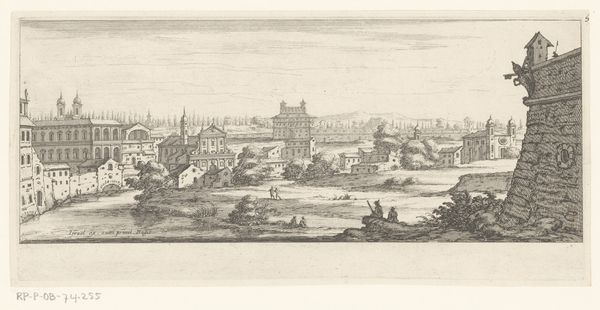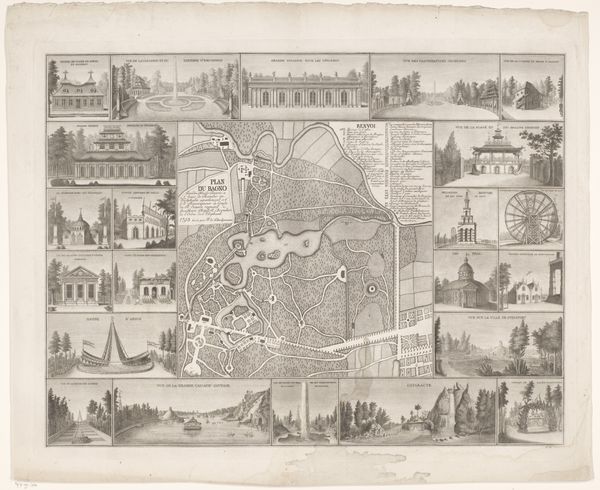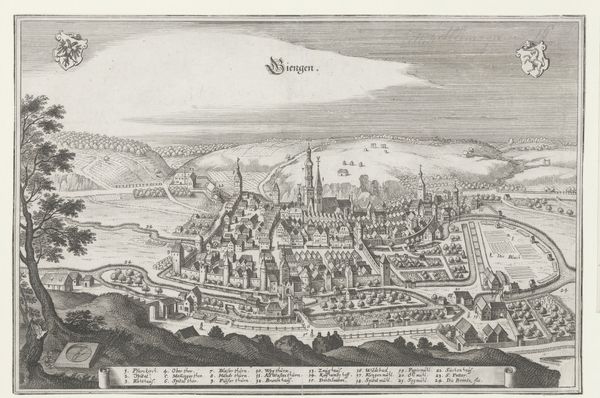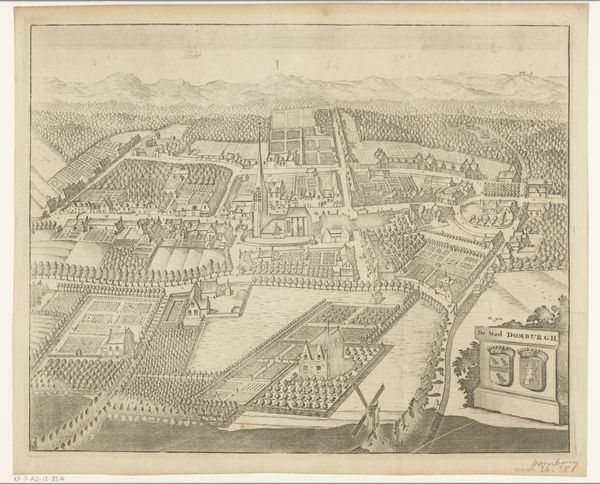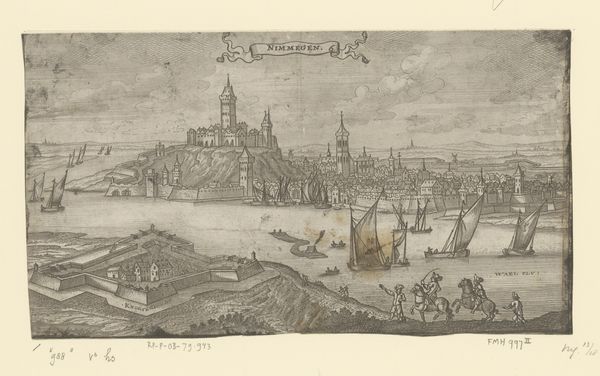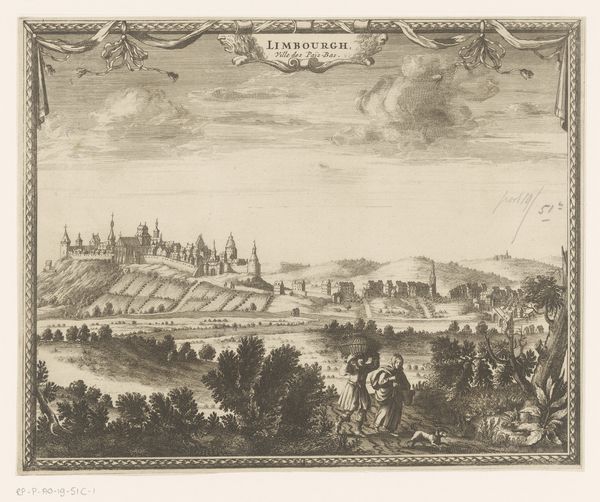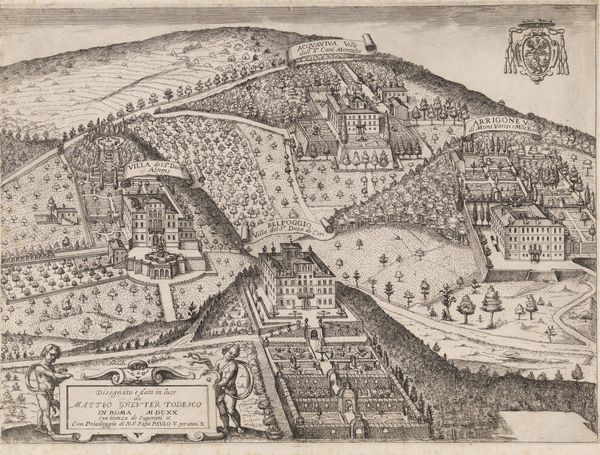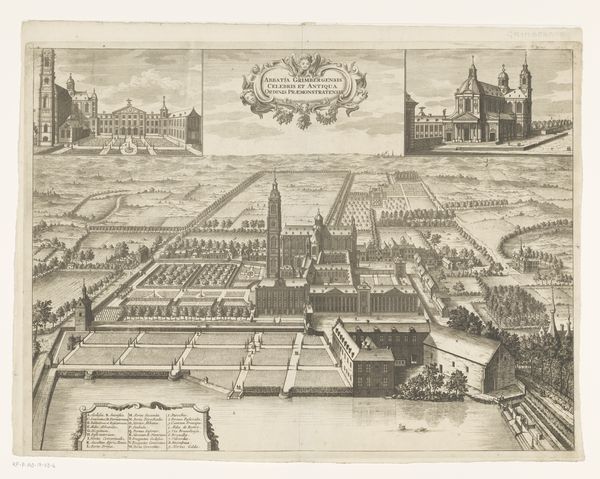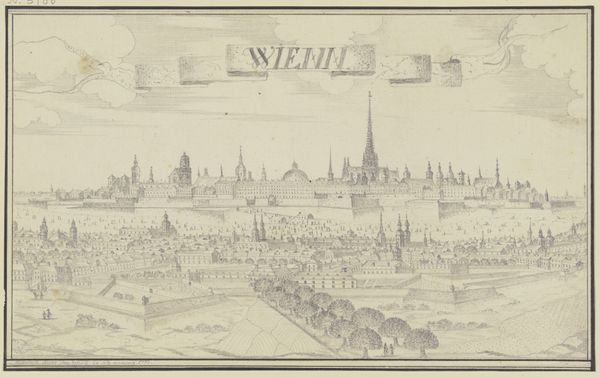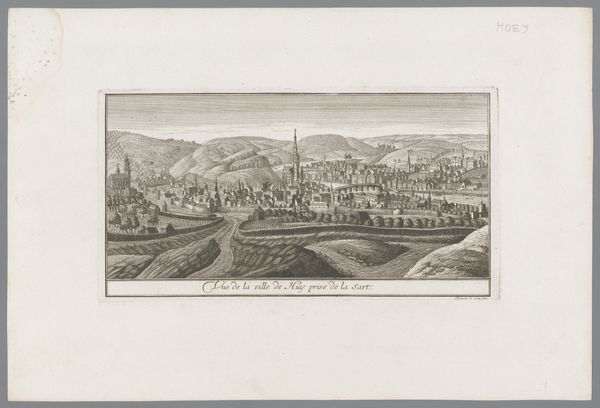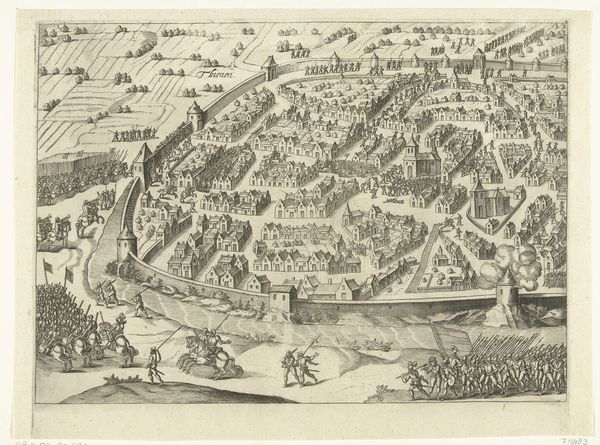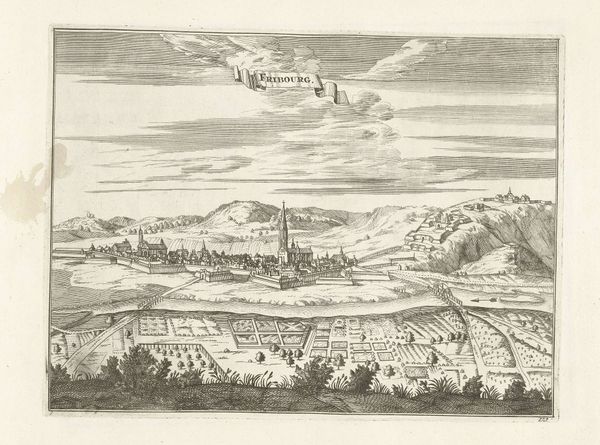
Copyright: Public Domain
Curator: Well, hello there. Right now, we're looking at a captivating drawing from around 1770, titled "Ansicht von Dresden von der Neustadt aus"—or, "View of Dresden from the New Town," created by Johann Baptist Reiser. It’s rendered in ink on paper and resides here with us at the Städel Museum. Editor: It strikes me as surprisingly still. A quiet observation, almost meditative, even with the intricacy of the city detailed below. It has this distanced feel, like a meticulously crafted memory. Curator: Precisely! Reiser adopts an elevated viewpoint, which was a popular technique in Baroque landscape art. Think of it as analogous to a filmmaker employing a drone today to capture the scope and majesty of the environment and situate the bustling activity of a human community into that surrounding landscape. Reiser places the viewer in this privileged, panoramic position—giving us an almost godlike view of Dresden. The lines are so incredibly precise, especially when you consider that he created this drawing only with ink on paper! Editor: It’s more than just a document; it’s a statement, an ideal perhaps. A stable, ordered society beautifully positioned into its landscape. I am however always questioning these “objective” views as to which specific viewers they were intended to please and inspire confidence in. Curator: Ah, the gaze! Good point. This drawing obviously carries undertones that speaks to the dominant cultural powers. The Age of Enlightenment had its own power dynamics at play and wasn’t for everybody… And looking closely, the walls… Editor: Walls usually speak of fortifications, defenses against a potential threat from outside. Curator: Of course, but it’s more complex than just barriers. Visually, Reiser represents Dresden’s perceived strength and security, reflecting not just its urban layout but the social structures upholding the hierarchy within. These meticulous details serve as powerful tools in shaping our perception, revealing more about the society's ambitions and aspirations than immediately meets the eye. Editor: A romanticized yet exclusionary image of societal harmony. Curator: Indeed! And thank you for highlighting it because this is exactly the sort of discourse the artist must provoke and cherish. What starts out as simple "pretty picture", actually speaks volumes to societal frameworks of any period, including the present one. I'd hope more visitors share your curiosity, and bring in your sensitivity!
Comments
No comments
Be the first to comment and join the conversation on the ultimate creative platform.
